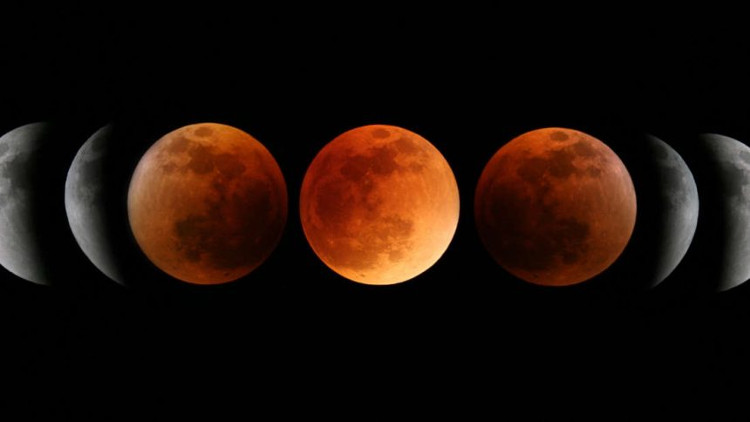The longest total eclipse of the century will take place in July
Astronomers around the world will have the opportunity to observe the total eclipse of 103 minutes this summer.
The longest eclipse of the 21st century will take place on July 27 , 2018 , when the Moon lurks behind the Earth's shadow for 1 hour and 43 minutes. Not only is it obscured, the Moon will be red by reflecting light from the Sun, creating a spectacle, according to Newsweek.

The moon turns red during the entire eclipse.(Photo: Phillip Holmes).
However, people in North America and South America will not have the opportunity to follow this astronomical event.The eclipse is most observable in parts of Africa, the Middle East, India, some parts of Europe , according to IFL Science.
In the last 100 years, only four times the entire period totality period has been able to match the event this summer. It was the eclipse event on June 15, 2011 (100 minutes), July 16, 2000 (107 minutes), July 1982 (107 minutes) and July 1935 (101 minutes).
In one calendar year, there are up to 4 solar eclipses and three lunar eclipses, NASA summarizes. The real moon has three types: total, half and dark.The event in July this year is . This type of eclipse occurs only when the full moon and the Sun, Earth, and Moon are in line. When the full lunar eclipse occurs, the Earth will directly pass between the Sun and the Moon and cast its shadow on its natural satellite.
The event takes place very slowly, the Moon will be obscured after more than an hour. When the lunar eclipse reaches its peak, all of the Earth's shadows called umbra will completely dump on the Moon. The Moon will be dark and may have dim red halo due to the influence of sunlight. In addition, other factors make the Moon become redder.
" The exact color of the Moon depends on dust and clouds in the atmosphere, " NASA said. "If there are more particles in the atmosphere, such as due to a volcanic eruption that took place earlier, the Moon will be darker red."
This lunar eclipse is especially long because the Moon will pass near the center of the umbra, meaning it will stay behind the Earth longer. When the Moon just crosses the edge of the umbra, the lunar eclipse will be shorter. The Earth is also the farthest point from the Sun during the lunar eclipse, making its shadow larger than normal. The Moon, at the farthest point of the Earth, is more in the shadow of the Earth.
- Which region in Vietnam can see the longest eclipse of the century?
- The longest total eclipse of the century
- Why will the lunar eclipse of 27/7/2018 be unusually long?
- Vietnam welcomes the longest total solar eclipse in the 21st century
- Vietnamese residents and the world eagerly watch eclipse
- Mars shines with the longest moon in the century
- The longest eclipse of the 21st century is coming
- The final total eclipse of the decade in the South American sky
- The first total eclipse of the 21st century
- The longest lunar eclipse of the century around the world
- Secret to see the most special 'Blood Moon' in the 21st century on April 4 in Vietnam
- Vietnam has more than 5 hours of total lunar observations
 Van Allen's belt and evidence that the Apollo 11 mission to the Moon was myth
Van Allen's belt and evidence that the Apollo 11 mission to the Moon was myth The levels of civilization in the universe (Kardashev scale)
The levels of civilization in the universe (Kardashev scale) Today Mars, the sun and the Earth are aligned
Today Mars, the sun and the Earth are aligned The Amazon owner announced a secret plan to build a space base for thousands of people
The Amazon owner announced a secret plan to build a space base for thousands of people